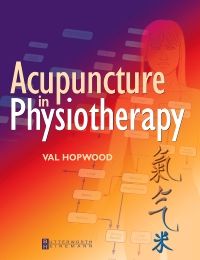Acupuncture in Physiotherapy, 1st Edition
Key Concepts and Evidence-Based Practice
Acupuncture has long been recognised as complementing the practice of physiotherapy. Acupuncture in Physiotherapy is written for physiotherapists who have already received a basic training in acupuncture and who wish to extend their practice and achieve an intermediate standard of knowledge. It links the philosophies of Traditional Chinese Medicine with the theory and practice of Western science in a single, clearly written and highly readable text.Acupuncture in Physiotherapy addresses the important issues on appropriate acupuncture research methodologies, particularly that of placebo control, and enables the reader to judge the quality of RCT evidence. It also examines more recent research into the mechanisms of acupuncture. Treatment vignettes are included throughout the text to demonstrate the immediate relevance of the sophisticated and subtle TCM thinking to modern physiotherapy practice. Research papers and texts are cited where they support TCM theory.Val Hopwood is an experienced practitioner and is well known for her acupuncture courses. Her ecumenical approach to the subject avoids an abstract separation of the two strands of acupuncture and in its juxtaposition of science and mythology provides a stimulating and original survey. Full of insights, this book will be required reading not only for physiotherapists but any health professional who uses acupuncture in their practice.
Acupuncture has long been recognised as complementing the practice of physiotherapy. Acupuncture in Physiotherapy is written for physiotherapists who have already received a basic training in acupuncture and who wish to extend their practice and achieve an intermediate standard of knowledge. It links the philosophies of Traditional Chinese Medicine with the theory and practice of Western science in a single, clearly written and highly readable text.Acupuncture in Physiotherapy addresses the important issues on appropriate acupuncture research methodologies, particularly that of placebo control, and enables the reader to judge the quality of RCT evidence. It also examines more recent research into the mechanisms of acupuncture. Treatment vignettes are included throughout the text to demonstrate the immediate relevance of the sophisticated and subtle TCM thinking to modern physiotherapy practice. Research papers and texts are cited where they support TCM theory.Val Hopwood is an experienced practitioner and is well known for her acupuncture courses. Her ecumenical approach to the subject avoids an abstract separation of the two strands of acupuncture and in its juxtaposition of science and mythology provides a stimulating and original survey. Full of insights, this book will be required reading not only for physiotherapists but any health professional who uses acupuncture in their practice.
Key Features
• Intended for PTs who have already received a basic training in acupuncture, this book moves beyond the basic theories of acupuncture and is intended both as an intermediate text and an encouragement to look further than simplistic musculoskeletal pain applications for this ancient technique.• Links the philosophies of traditional Chinese medicine with normal physiotherapy practice.• Allows readers to extend their practice by increasing their understanding of acupuncture and indicating where and how it will benefit their patients.• Uses evidence-based practice.• Written by an experienced and well-known practitioner in acupuncture
Author Information
By Val Hopwood, PhD, FCSP, Dip Ac Nanjing, Course Director, MSc Acupuncture, Coventry University, Coventry, UK












